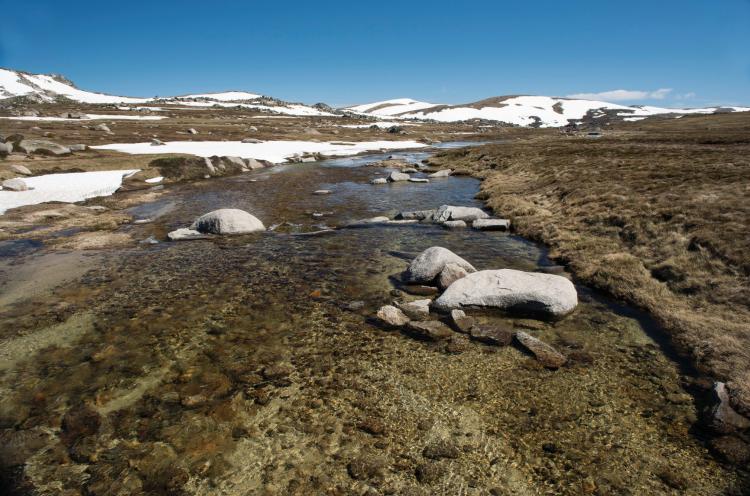
The NSW Government has released the final report of a Spring 2020 survey showing just over 14,000 wild horses call the Kosciuszko National Park home.
Environment Minister Matt Kean has welcomed the new data saying the results reinforced the need to manage the horse population through approaches including passive trapping and re-homing.
“I remain 100% committed to managing the very sensitive areas of the iconic Kosciuszko National Park on the basis of the best available science,” Mr Kean said.
The survey shows a decrease of approximately 5,000 horses from 2019 where the population was estimated to be approximately 19,000 animals.
The impact of drought, last summer’s bushfires and the movement of horses in and out of the park are some of the factors being attributed the change in numbers.
Another contributing factor is that unlike the 2019 survey which covered the entire NSW and Victorian Alps region, this survey looked at the number of wild horses within Kosciuszko National Park only.
“We will always have wild horses in Kosci, but 14,000 is still too many. If we want to preserve this precious place and the plants and animals that call it home, we need to manage horse numbers responsibly,” Mr Kean said.
“We can now be confident that we have the most up-to-date data as we get the balance right, protecting the snowies and retaining the heritage value of these wild horses.”
The survey results will inform a new draft wild horse management plan, setting out how to reduce the horse population to a sustainable level, protecting the environment and recognising the wild brumby’s heritage value.
In 2020, over 340 horses were removed from the park by passive trapping and re-homing. This interim program focusing on the Nungar Plain, Cooleman Plain and Kiandra Plain will continue pending the finalisation of the new management plan.
KEY FACTS
- The results reinforce the work NPWS has undertaken to manage horse numbers in three very sensitive areas of the park – about nine per cent of the park – remains important and appropriate.
- This survey uses a scientifically robust methodology that has become the international and Australian standard for population surveys of large animals from the air.
- These survey results are based on world best practice and independently peer reviewed by the CSIRO and the Queensland Department of Agriculture and Fisheries.
- The new survey provides an updated estimate of the population size and density of wild horses in Kosciuszko National Park and is an important part of the overall body of information and scientific research used to inform the long-term approach to sustainable wild horse management across the park.
- NPWS has also removed over 3,000 feral pigs, deer and other feral animals in 2020 as part of integrated feral animal control operations.
- The impacts of wild horses are well documented and are extensive. They include:
- trampling fragile alpine ecosystems,
- eroding waterways and,
- destroying key habitat for threatened species such as the northern Corroboree frog and Stocky Galaxias fish.
- More information on the survey and the NPWS management of wild horses in Kosciusko National Park can be found at :
